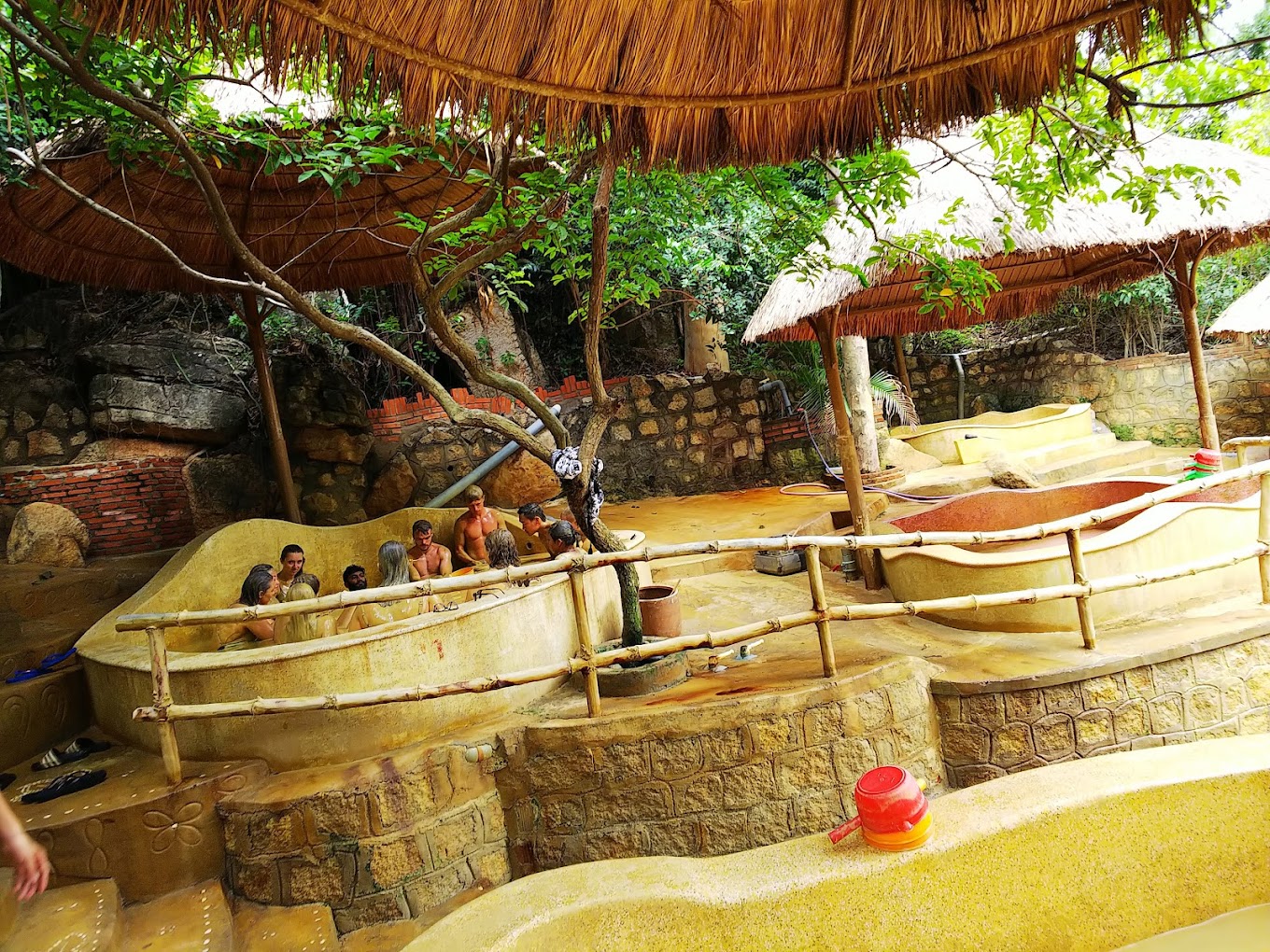The ancient town of Hoi An not only has the Japanese Covered Bridge but also hundred-year-old houses, a peaceful tranquility that makes Hoi An so charming. This is evident through the small, cozy cafes, the narrow street corners, the paper flower-covered arches in front of yards, or the sound of paddles hitting the waves of the Hoai River, enough to evoke someone’s longing to visit Hoi An even just once.
After knowing what to eat in Hoi An, surely you also need to know when is the best time to visit Hoi An, which month and on which days. This is convenient for planning, arranging a suitable itinerary for your trip to Hoi An because the weather in Hoi An can be quite uncomfortable, with hot sunny days and heavy rainy days.
Table of Contents
When is the best time to visit Hoi An and what is the temperature and weather like?
Hoi An is a city located in Quang Nam province, situated along the Thu Bon River, with two beautiful beaches, famous for Cua Dai Beach and An Bang Beach. Being a province in the South Central Coast region, Hoi An is influenced by a tropical monsoon climate. Therefore, it exhibits the typical characteristics of the Central Coast region, with frequent rain and abundant sunshine.
Hoi An does not have an extremely cold winter like the North or excessively hot summers like the South. The climate in Hoi An, as well as in the Central provinces in general, can be considered quite harsh. Hoi An does not have the typical four-season weather of spring, summer, autumn, and winter, but rather two distinct seasons: the rainy season and the dry season, each lasting about half a year.
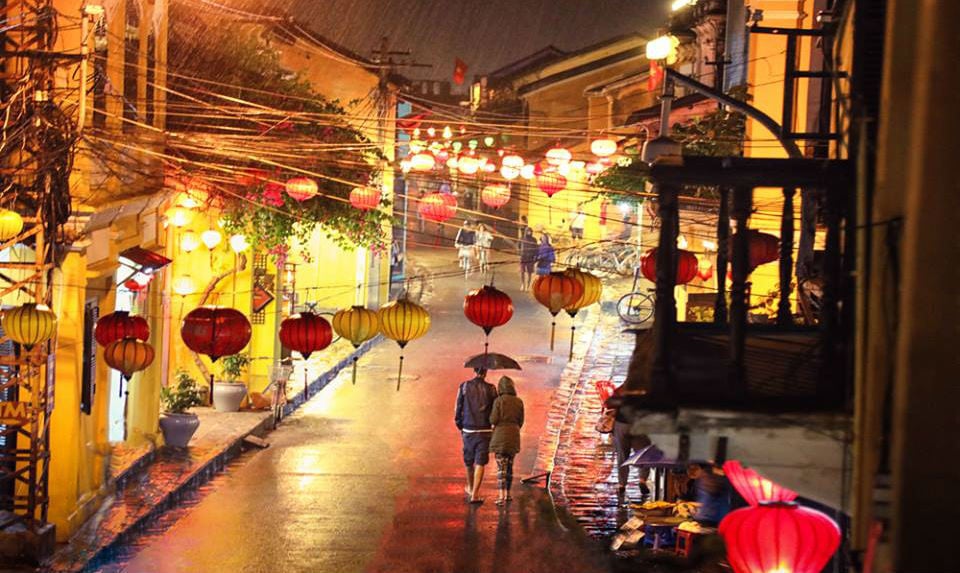
In terms of daily temperature, Hoi An has an average annual temperature range of 25.6°C, with the highest reaching 39.8°C and the lowest around 22.8°C. Hoi An also experiences relative humidity, with an average of 83% annually, 75% during the dry season, and 85% during the rainy season.
To help people better understand when to visit Hoi An, we will discuss the characteristics of the dry and rainy seasons, as well as analyze the advantages and disadvantages of each season in more detail below. For those who have never experienced traveling to Hoi An, it’s important to read carefully as it will greatly assist in planning, scheduling, and budgeting for your trip.
View More Articles: Hoi An, Quang Nam weather forecast tomorrow, automatically updated for tourism.
When should you travel to Hoi An? Is the rainy season or the dry season better?
The sunny season, or dry season as it’s also known, is generally considered the ideal time to travel, not only in Hoi An but anywhere else as well. Since Hoi An is adjacent to Da Nang, you can also consider when to travel to Hoi An, which month and on which days if you want to combine your trip to Hoi An with a visit to Da Nang, which is very convenient.
For any travel, weather and climate are significant factors that greatly affect your trip. Therefore, if you plan to go anywhere, you should first pay attention to the weather. In Hoi An, specifically, it’s divided into two distinct seasons: the rainy season and the dry season. Although the dry season is always more favorable in terms of transportation, sightseeing, and dining, the rainy season actually has its own unique beauty.
Traveling to Hoi An during the dry season
How long does the dry season in Hoi An last?
The dry season in Hoi An typically lasts from February to August, or it may start in January and end in July, depending on the variation of each year’s dry season.
Advantages of traveling to Hoi An during the dry season
Based on independent travel experience in Hoi An, this is considered the ideal time to explore the ancient town. With an average temperature of 33 degrees Celsius, it’s very conducive for tourists to sightsee. Some months experience virtually no rain, with continuous sunshine from early morning until late afternoon. However, if you don’t enjoy intense sun like that of the central region, you can opt for the beginning or end of the dry season when the weather is more comfortable.
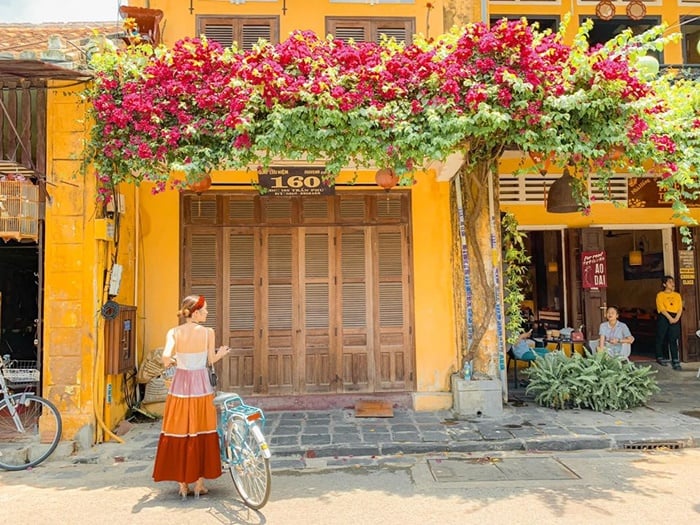
To make it easier for everyone to understand, here are some advantages of traveling during the dry season in Hoi An:
- The hot and dry weather, with less rain, is very convenient for sightseeing and transportation.
- Ideal for snorkeling to admire the coral reefs in Cu Lao Cham.
- Diverse entertainment, dining, and recreational services offer plenty of choices.
- Hoi An attracts a large number of tourists during this time, making it lively and bustling.
- Many special events and festivals take place after the Lunar New Year, which are unique and appealing.
- Very suitable for capturing Instagram-worthy photos and preserving beautiful memories.
Disadvantages of traveling to Hoi An during the dry season
Although the dry season is generally considered the ideal time to visit Hoi An, there are some drawbacks, albeit they don’t significantly impact your trip:
- Long waiting times to purchase tickets for visiting the ancient town, tickets for Seven Ladies Coconut Forest, or tickets for canoe trips to Cu Lao Cham.
- Some periods during the dry season can be extremely hot, which may cause discomfort if you venture out during midday, especially in the months of May to July.
- Due to the high tourist season in Hoi An during the dry season, it can be challenging to book nice accommodations, leading to the possibility of fully booked rooms and difficulties in finding overnight stays.
- The influx of tourists to Hoi An during the dry season can lead to overcrowding, making it easy to feel overwhelmed and unable to fully appreciate the tranquility that Hoi An offers.
- Service prices may increase significantly compared to normal days, especially for hotel rooms, which can rise by 20-50% depending on the hotel. Food and beverage prices during peak season may also be much higher.
What to bring when traveling to Hoi An during the dry season?
- Phone and power bank to ensure uninterrupted photography.
- Jacket, sunscreen to protect yourself from harmful sun rays.
- Swimwear if you decide to visit An Bang Beach or go snorkeling in Cu Lao Cham.
- Identification card (ID) if you plan to stay overnight in Hoi An or rent a motorbike.
- Sufficient funds for dining and participating in entertainment activities in the ancient town.
- It’s advisable to book a hotel room at least one week in advance to avoid rooms being fully booked.
Traveling to Hoi An during the rainy season
The rainy season in Hoi An lasts from August to February of the following year. Also known as the low season, due to the rain, the number of visitors to Hoi An during this time is not as high as during the dry season. This is an ideal time for those who want to experience the serene and ancient beauty of the old town. However, if you’re unsure about when to travel to Hoi An, which month to choose, or if you don’t check the weather conditions beforehand, you may encounter rain, which can make sightseeing difficult.
Advantages of traveling to Hoi An during the rainy season
- Hoi An during the rainy season exudes a poetic, romantic charm, perfect for those who wish to explore the old town in a special way.
- The rainy season in Hoi An is always tranquil and gentle, rather than bustling and crowded like the dry season, so sightseeing feels very comfortable and pleasant, without the need to squeeze through crowds or deal with congestion.
- Traveling to Hoi An during the rainy season can help you save quite a bit of money on your trip because during this time, services such as flights and hotels often offer significant discounts or attractive promotional programs.
- Visiting Hoi An during this time gives you the opportunity to admire the old town immersed in floodwaters, offering a unique and rare beauty that will surely be a memorable experience.
- After the rainy days, winter arrives in Hoi An, with less rainfall. Although it may be colder, it’s still convenient for sightseeing.
- The “Memories of Hoi An” live performance show still takes place on rainy days, offering an immersive experience even during the rain.
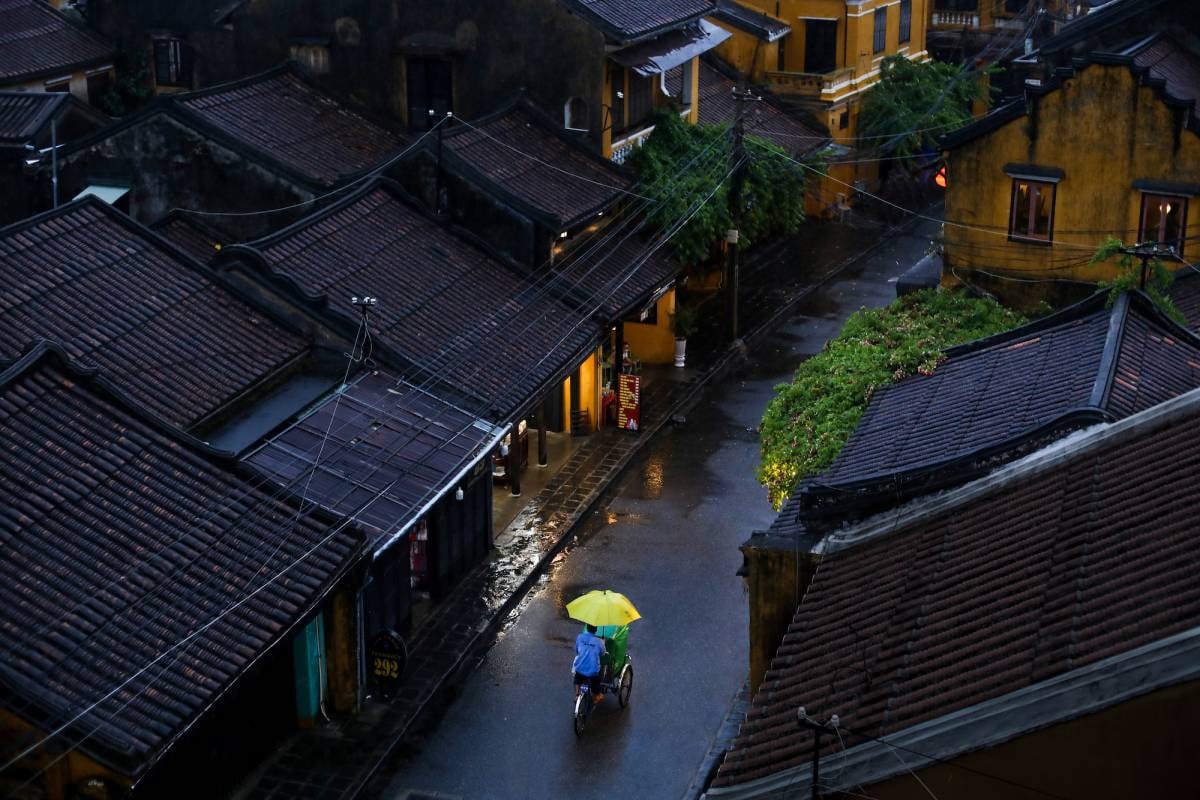
Disadvantages of traveling to Hoi An during the rainy season
Compared to the advantages, there are indeed quite a few disadvantages when traveling to Hoi An during the rainy season:
- Encountering significant obstacles in transportation and sightseeing, especially for those traveling to Hoi An by motorbike or bus.
- During this season, Hoi An experiences continuous heavy rain throughout the day, occasionally with sunshine. However, after the rain stops, the streets become flooded, damp, and extremely uncomfortable.
- It’s certainly challenging to capture sparkling photos with sunlight or stroll around the streets to explore everything when it’s raining.
- Some food and drink stalls along the roadside may no longer be open, depriving you of the opportunity to enjoy delicacies like grilled sweet potatoes, che xoa xoa (a type of dessert), bánh bột lọc (a kind of dumpling), or grilled meat skewers.
- Outdoor activities such as Bai Choi (a traditional Vietnamese game), blindfolded pot smashing, or releasing lanterns may be canceled due to the rain. If you miss out on these enjoyable activities, what’s the point of visiting Hoi An? Indeed, there are numerous inconveniences when Hoi An experiences heavy rainfall.
What to prepare when traveling to Hoi An during the rainy season?
If you still decide to visit Hoi An during the rainy season, to ensure the most convenient trip possible and maintain your health, you should prepare the following items:
- Raincoat, umbrella.
- Waterproof bag for your phone.
- Winter shoes, avoiding high heels to prevent falling.
- Warm clothes, scarf, gloves if the weather turns cold.
When is the best time to travel to Hoi An?
Traveling to Hoi An in January and February – Ideal for leisurely walks and sightseeing
This is the time when Hoi An is still in the festive atmosphere before and after Tet (Lunar New Year), with the spring vibe still lingering everywhere. This period marks the transition from winter to spring in Hoi An, with relatively cool and pleasant weather, occasionally with light rain showers, nothing to worry about.
Especially, the summer festivals and Tet celebrations are bustling, giving visitors the opportunity to not only enjoy the vibrant atmosphere of Hoi An but also participate in various festivals and learn more about the local customs and traditions during Tet.
Traveling to Hoi An in March and April – Transitioning into the dry season
During these months, Hoi An is still in the transition from spring to summer, so the weather is relatively cool, not yet too hot, and there are no more storms. As it is not yet the peak tourist season, the prices of services are cheaper compared to May, June, and July.
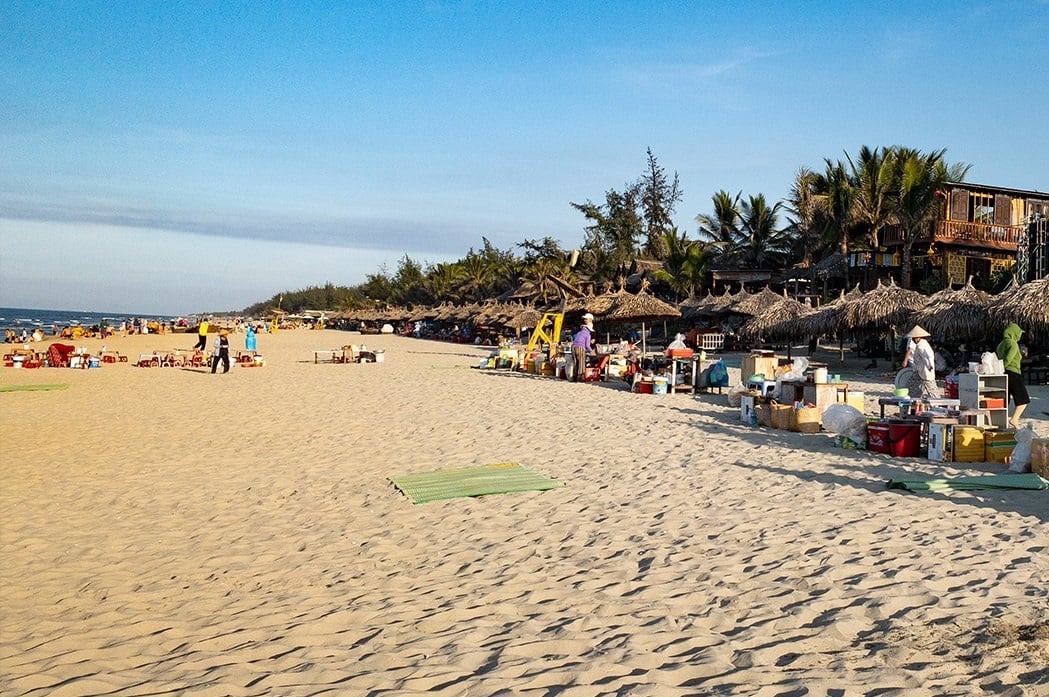
Traveling to Hoi An in May, June, July – The best time to visit Hoi An
From May to July marks the end of the dry season in Hoi An, which is the perfect weather for tourism, not only convenient for visiting the ancient town but also for activities like bamboo basket boat rowing, beach bathing, and coral diving.
During the dry season, Hoi An is dry throughout the day, but the most beautiful time is still in the evening, with cool weather ideal for sightseeing. You should avoid visiting Hoi An at noon when there is intense sunlight. It is best to start exploring around 3-4 pm, which is the most beautiful time, and then enjoy the nightlife.
Traveling to Hoi An in August, September – Less rain, quite convenient for sightseeing.
This is the time when Hoi An is gradually entering the rainy season, with more rain starting in September, but generally, there is still a lot of sunshine. You should note that this is still the peak tourist season in Hoi An, so although the prices of services are reduced, they are still relatively high compared to other times of the year. If you still don’t know when to travel to Hoi An, which month, or how many days, you can choose this time for affordability.
Traveling to Hoi An in October, November – Very likely to encounter rain
This is undoubtedly the rainy season in Hoi An, lasting for about 2-3 months before entering winter. This is also the time when Hoi An is least crowded, and it is also the low season. It will not be suitable for group tourists or families with young children, but it is quite an interesting experience for young people to feel a very different Hoi An. Walking on the wet streets, admiring the paper lanterns, and listening to the sounds of raindrops on the ancient roofs are quite special experiences.
Not only that, traveling at this time will help you save a lot of expenses because airline tickets and hotels are greatly reduced, and other services are also cheaper. You will no longer see the lucrative services during the peak season but instead receive more attentive and caring service.
The best time to travel to Hoi An that you should know
Deciding when to travel to Hoi An, which month is the best, is not an easy question to answer. While the most ideal time is still around May, June, July due to the extremely pleasant weather, if you want to explore a gentler Hoi An, with cheaper services and easier hotel bookings, then consider visiting in March, April or August, September. It’s best to avoid the rainy season from October to November. If you happen to only have time during this period, be sure to keep an eye on the weather forecast beforehand.
How many days should you stay when traveling to Hoi An?
According to calculations, staying for 2 days and 1 night is sufficient for a trip to Hoi An. If you have more time, you can extend your stay, depending on whether you are traveling to Hoi An independently or on a tour, staying at a hotel or resort. However, based on experience, you shouldn’t stay too long. The best option is to visit Danang first, then spend about 2 days in Hoi An, as it would be a waste to visit Hoi An without stopping in Danang.
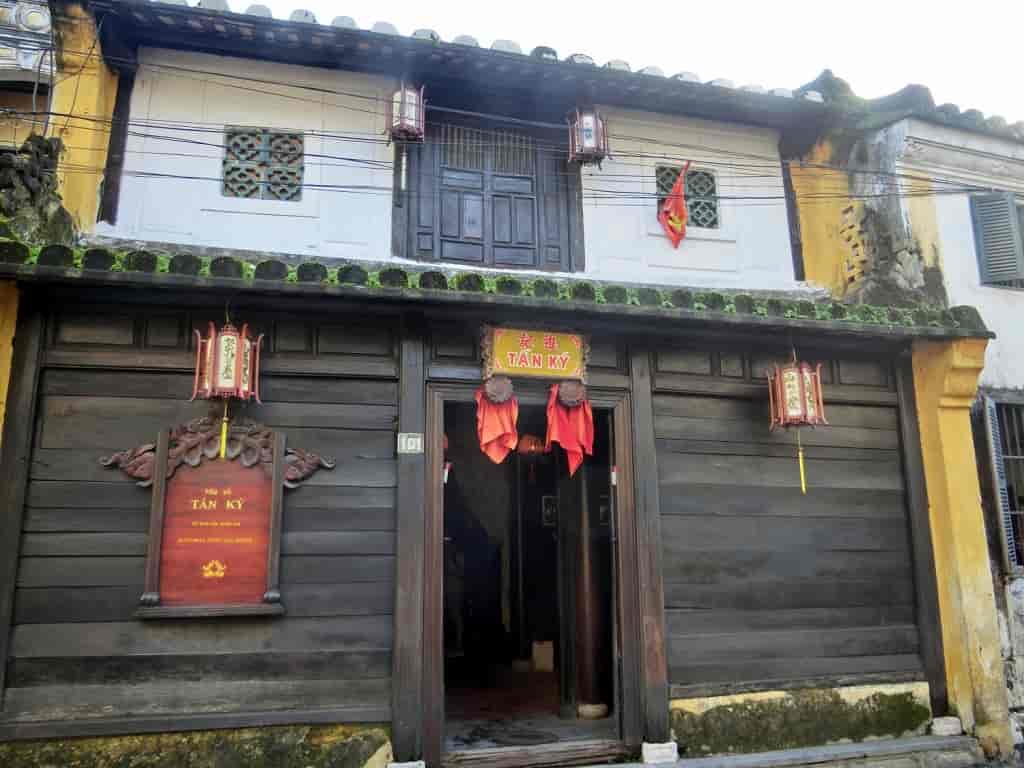
On the first day, you can visit the ancient town and explore attractions within the ancient town such as the Japanese Covered Bridge, Tan Ky Ancient House, and Phung Hung Ancient House. The morning in Hoi An is quite sparse, and the most beautiful time is in the evening, so in the morning, you can take the opportunity to visit some further destinations like Tra Que Vegetable Village, Thanh Ha Pottery Village, or Bay Mau Coconut Forest. In the afternoon, return to the ancient town for leisure.
If possible, you can stay overnight in Hoi An, so the next morning you can start your trip to Cu Lao Cham Island directly. This is a very pristine island located in Tan Hiep commune, Hoi An City.
On the second day, we will begin the journey to explore Cu Lao Cham Island. It’s advisable to join a tour for this, especially if departing from Hoi An, as it would be cheaper than starting from Danang. If you have no experience buying canoe tickets or don’t want to wait for hours for the boat, it’s best to go on a tour where everything is taken care of.
Now you know when to travel to Hoi An, which month and on which days. Hopefully, the article from VnCarRentals.com’s will help you choose the best time to visit Hoi An. Don’t forget to use the private car rental service in Hoi An from VnCarRentals.com to have the best trip.


